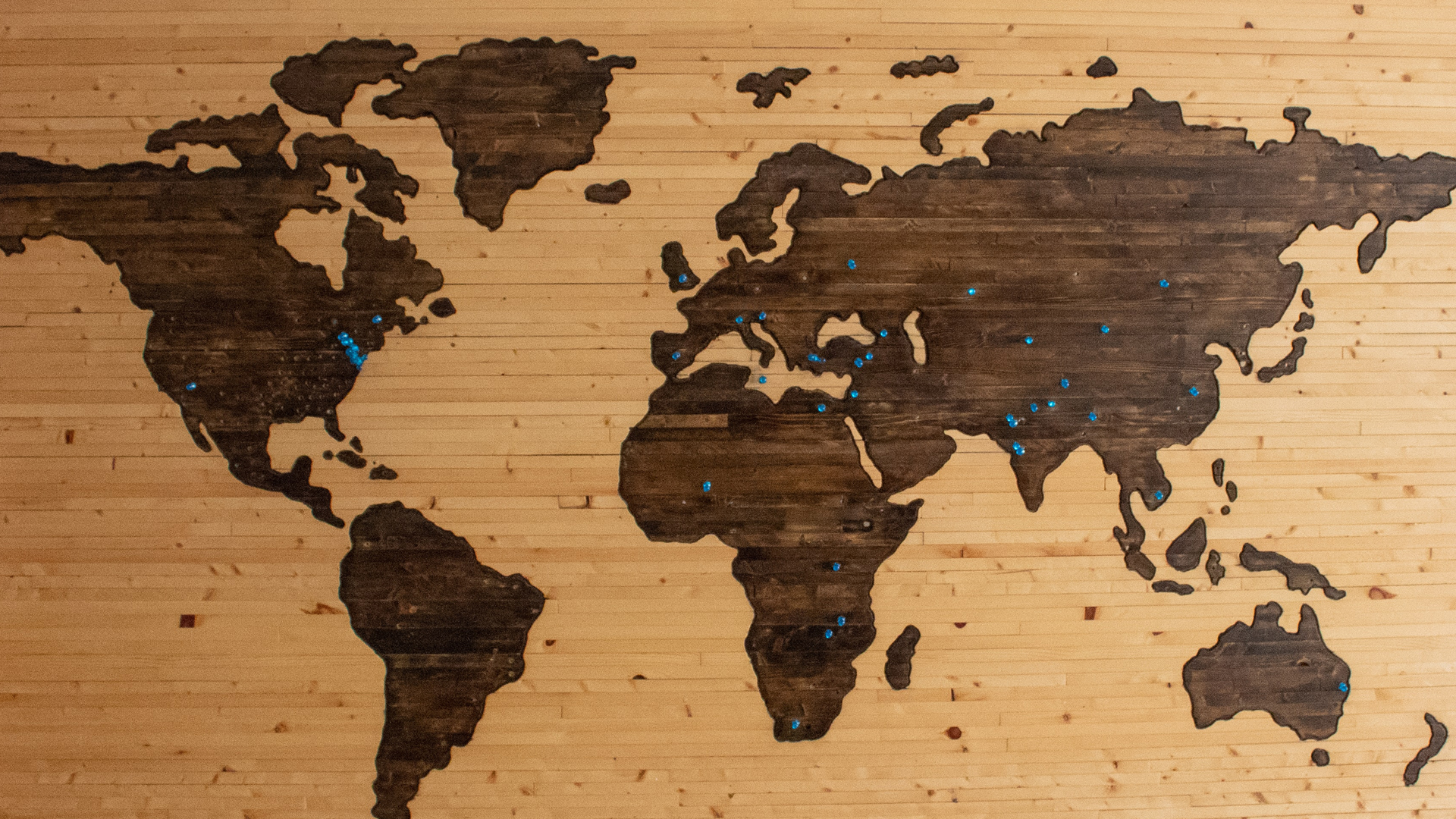Pages
- About
- Blog
- Confidence
- Contact
- Contact Success
- FAQ (Frequently Asked Questions)
- Free Ascend Self-Assessment
- Global
- AA Inlube OÜ
- ARQ Reliability
- Atlasco Egypt
- Bureau Veritas Spain
- C.C.JENSEN
- Caribbean Analytical Services
- Center for Reliability Excellence
- Confialub
- Dr. Lantos Laboratory
- FocusLab
- GoodLube
- Laurentide Controls
- Mecoil
- Noria Latin America
- Solge Corporation
- Talmay
- The Eventful Group
- VAS Tribology Solutions
- VJ Engineering
- Yellotec
- Guarantee
- Home
- Mailing List Success
- Mobile Privacy Policy
- Privacy Policy
- Public Training Cancellation Policy
- Resources
- Services
- Asset Management for Lubricated Equipment
- Corporate Lubrication Standards Manual
- Failure Analysis
- Filter Testing
- General Consulting
- Litigation & Expert Witnessing
- Lubricant Selection Optimization
- Lubrication Program Development
- Lubrication Program Partnerships
- Lubrication Route Management
- Procedure Development
- Storage and Handling Design
- Sitemap
- Terms of Use
- Training
Posts
Articles
- 3 Easy Steps for Proactive Maintenance
- 3 Reasons Why Oil Analysis Programs Fail
- 3 Simple Ways to Improve Fluid Cleanliness
- Adding Grease to Blocked Lube Lines
- Advantages of Bull’s-Eye Sight Glasses
- Advice for Lubricating Wire Ropes
- Advice for Proper Lubricant Storage
- Antifreeze Contamination in Motor Oil
- Choosing the Right Maintenance Strategy
- Document Your Lube Routes
- Easy Field Tests for Onsite Oil Analysis
- How Hydrolysis Can Affect Your Oil
- How to Avoid Over-Greasing Bearings
- How to Control Oil Aeration
- How to Identify Water Contamination in Oil
- How to Select the Right Motor Oil
- Justifying a Lubrication Program
- Know the Effects of Water Contamination
- Linking Enhanced Reliability to the State of Lubrication
- Microscopes: A Simple Diagnostic Tool
- Multiple Oil Sampling Ports
- Noria Among Oklahoma’s Top Workplaces
- Oil Viscosity Index is Important
- Selecting High Speed Grease
- The Benefits of Labyrinth Seals
- The Business Case for Lubrication Excellence
- The Power of Live Zone Oil Sampling
- The Right Greasing Frequency
- The Risks of Using EP Additives
- The Truth About Varnish
- The Truth About Additive Depletion
- Tips for Flushing Oil Sampling Equipment
- Understanding Break-in Wear
- Using Criticality to Drive Oil Analysis Strategy
- Using KPIs to Measure Lubrication Efficacy
- What Grease Color Can Tell You
- What Oil Filters Can Tell You
- What To Know About Your Oil Filter
- Wrong Lubricant Viscosity & Volume
News
Podcasts
- Podcast: A Storeroom’s Place in Reliability featuring Dr. John Ross
- Podcast: Designing for Reliability featuring Daniel Rader
- Podcast: Empowering People to Succeed featuring Charli Matthews
- Podcast: Getting Buy-In for Change featuring Paul Farless
- Podcast: Getting Maintenance Specifics Right featuring Greg Christensen
- Podcast: Holiday Special: Reliability with Santa!
- Podcast: Innovations in Lubrication featuring Bennett Fitch
- Podcast: Leadership Lessons in Lubrication featuring Jeff Walkup
- Podcast: On-site Oil Analysis Benefits featuring Lisa Williams
- Podcast: Onboarding and Technical Skills featuring Jerry Putt
- Podcast: Operator-Driven Reliability featuring Jeremie Edwards
- Podcast: Proper Maintenance Structure featuring Brian Brzinski
- Podcast: Public Utility Reliability featuring Scott Furman
- Podcast: Reliability Advice from an Expert featuring Drew Troyer
- Podcast: Staffing Issues in the Lube Industry featuring Rafe Britton
- Podcast: State of Reliability in the Middle East featuring Mina Soliman
- Podcast: Succeeding with Remote Monitoring featuring Levi Heilman
- Podcast: The Future of Reliability featuring Jeremy Drury
- Podcast: The Golden Age of Lubrication featuring Jim Fitch
- Podcast: Trade School vs. University featuring Amy Moore
- Podcast: Transformational Leadership featuring Jody Parsons
- Podcast: Tribology in the Fast Lane featuring Lake Speed Jr.
Quick Tips
- 3 Easy Steps for Proactive Maintenance
- 3 Reasons Why Oil Analysis Programs Fail
- 3 Simple Ways to Improve Fluid Cleanliness
- Adding Grease to Blocked Lube Lines
- Advantages of Bull’s-Eye Sight Glasses
- Advice for Lubricating Wire Ropes
- Advice for Proper Lubricant Storage
- Advice for Quality Oil Sampling
- Antifreeze Contamination in Motor Oil
- Best Practices for Lubricant Storage and Handling
- Choosing the Right Maintenance Strategy
- Document Your Lube Routes
- Easy Field Tests for Onsite Oil Analysis
- Eliminating Lubricant Cross-Contamination
- High Viscosity Gear Oil Filtering
- How Hydrolysis Can Affect Your Oil
- How to Avoid Over-Greasing Bearings
- How to Control Oil Aeration
- How to Extend Oil Life
- How to Identify Water Contamination in Oil
- How to Improve Desiccant Breather Life
- How to Select the Right Motor Oil
- How to Store Oil Drums
- Implementing World Class Oil Analysis
- Justifying a Lubrication Program
- Microscopes: A Simple Diagnostic Tool
- Multiple Oil Sampling Ports
- Oil Viscosity Index is Important
- Predicting Machine Failure with Oil Analysis
- Selecting High Speed Grease
- Simple Test to Check Lubricant Health
- The Benefits of Labyrinth Seals
- The Power of Live Zone Oil Sampling
- The Right Greasing Frequency
- The Risks of Using EP Additives
- The Truth About Varnish
- The Truth About Additive Depletion
- Tips for Flushing Oil Sampling Equipment
- Understanding Break-in Wear
- Using KPIs to Measure Lubrication Efficacy
- What Grease Color Can Tell You
- What Oil Filters Can Tell You
- What To Know About Your Oil Filter
- When Does Synthetic Oil Make Sense?
- Why Particle Counters Make Lubrication Programs More Effective
- Wrong Lubricant Viscosity & Volume


